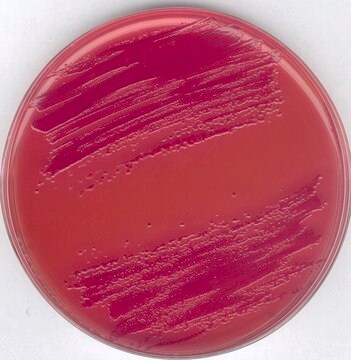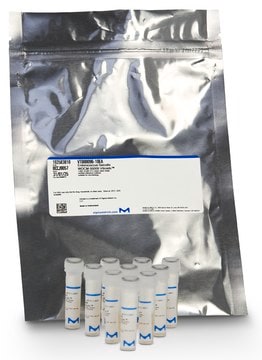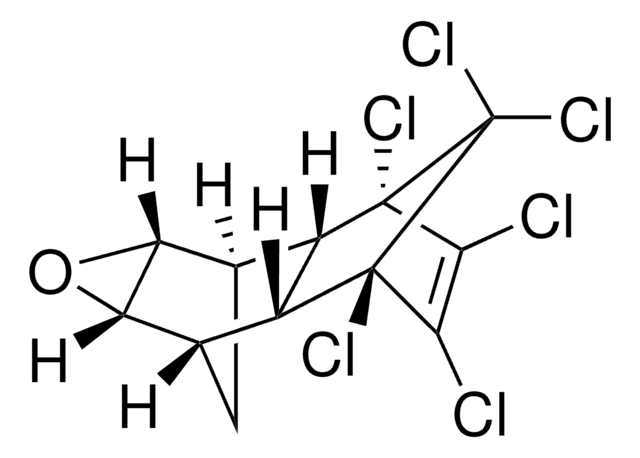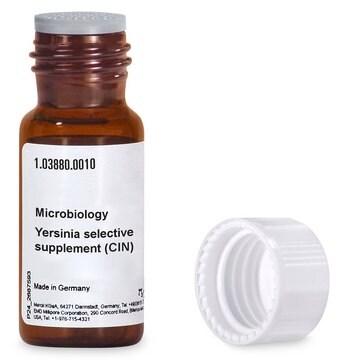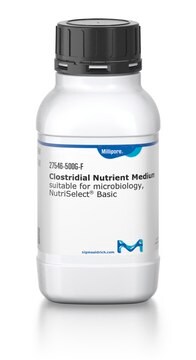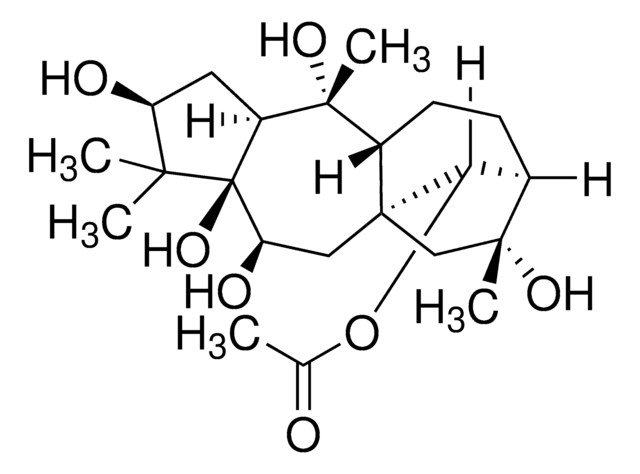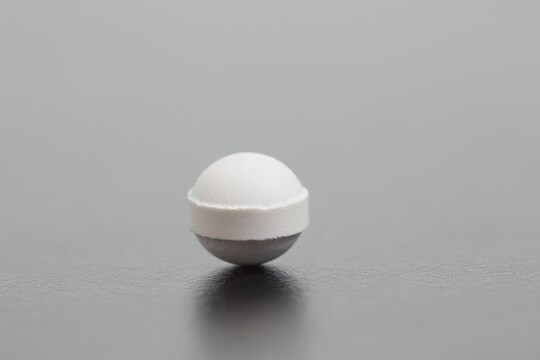67651
Y. enterocolitica Millichrome™ plus Agar Base
suitable for microbiology
Sinónimos:
Yersinia chromogenic agar
About This Item
Productos recomendados
agency
EP
JP
USP
Quality Level
sterilization compatibility
dry heat compatible
form
dry powder
shelf life
limited shelf life, expiry date on the label
composition
Agar, 15.0 g/L
Chromogenic Mix, 1.3 g/L
Chromogenic mix, 1.3 g/L
Peptones, 20.0 g/L
Salts, 5.0 g/L
manufacturer/tradename
MilliChrome™
technique(s)
microbiological culture: suitable
final pH
7.0±0.2 (25.0 °C)
solubility
deionized water: 41.3 g/L
application(s)
food and beverages
microbiology
shipped in
ambient
storage temp.
15-25°C
suitability
selective for bacteria: Yersinia enterocolitica
Categorías relacionadas
General description
Application
Preparation Note
- Disperse slowly 41.3 g of powder base in 1 L of purified water.
- Stir until agar is well thickened.
- Heat and bring to boil (100 °C) while swirling or stirring regularly. DO NOT HEAT TO MORE THAN 100 °C. DO NOT AUTOCLAVE AT 121 °C.
- Cool in a water bath to 45-50 °C +/- 2 °C.
- Step 2 (Preparation of the Y. enterocolitica Millichrome™ plus Supplement)
- Prepare a stock solution of the supplement: Add 100 mg to 1 mL of purified water.
- Swirl well until complete dissolution. Filter sterilize at 0.45 μm.
Step 3 (Mixing of the prepared base and the prepared supplement)
- Add 1 mL of the prepared supplement solution to the prepared base cooled at 45-50 °C +/- 2 °C.
- Swirl gently to homogenize.
- Pour into sterile Petri dishes.
- Let it solidify and dry.
Analysis Note
Legal Information
hcodes
pcodes
Hazard Classifications
Aquatic Chronic 3
Storage Class
11 - Combustible Solids
wgk_germany
WGK 2
Elija entre una de las versiones más recientes:
Certificados de análisis (COA)
¿No ve la versión correcta?
Si necesita una versión concreta, puede buscar un certificado específico por el número de lote.
¿Ya tiene este producto?
Encuentre la documentación para los productos que ha comprado recientemente en la Biblioteca de documentos.
Nuestro equipo de científicos tiene experiencia en todas las áreas de investigación: Ciencias de la vida, Ciencia de los materiales, Síntesis química, Cromatografía, Analítica y muchas otras.
Póngase en contacto con el Servicio técnico
